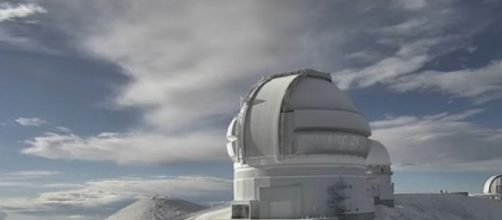Hawaii is set to face blizzard conditions at the summits with wind speeds in excess of 100 mph. The National Weather Service (NWS) issued the warnings. The mountainous regions on Hawaii, the big island, could have to deal with more than 12 inches of snow. These conditions are related to a Kona storm. It is a type of seasonal cyclone in the region. It forms during winter and originates from winds that come from the westerly Kona direction.
There are two volcanos in Hawaii. These are Mauna Kea and Mauna Loa. Their altitudes are around 13,000 feet.
Obviously, the combination of the cold fronts and heavy rain results in snowfall. The NWS cautioned petiole to avoid going out of doors. Its advice is: "Travel should be restricted to emergencies only.” In case travel is necessary, people should be in possession of a winter survival kit. When stranded, they should remain with the vehicle.
Hawaii witnessed snowfall in January
In January, the mountains of Mauna Kea and Mauna Loa witnessed snowfall. The present blizzard warning in Hawaii is the first since 2018. The next year, there was snowfall in Hawaii at altitudes of 6,000 feet. The NWS office in Honolulu described it as “historic.” Records indicate 1979 as the year when Hawaii recorded the coldest temperature of 12 degrees in its history.
The amount of snowfall this season in the United States has been considerably less. Hawaii has overtaken America in this respect.
Heavy rains with flash floods expected in Hawaii
The Weather Channel mentions about possibilities of widespread heavy rains. Strong winds and possible flash flooding could accompany these. The combination of rains and floods with the current cold front could mean Hawaii would experience long periods of inclement weather. People would have to be ready to face unpredictable weather.
Blizzard warning for Big Island Mountains in Hawaii
There is a blizzard warning in place for the Big Island mountain summits of Hawaii. The NWS cautions about nearly 12 inches of snow in the region.
There could also be wind gusts of 100 mph. Advice to the people is to avoid any travel in the area because that could not only be difficult but also impossible. The force of winds and blowing of snow would affect visibility at times. There could be periods of zero visibility. These warnings are for the Hawaii’s Mauna Kea as well as Mauna Loa. Both these peaks are more than 13,000 feet tall. There are forecasts of heavy rain, giant swells and flooding at lower elevations. Incidentally, the NWS prediction center says snow is common at altitudes over 11,000 feet in Hawaii. However, there is an exception. Hawaii’s third-tallest peak, Haleakala, at just over 10,000 feet, records snow at intervals of every two to three years.
The weatherman goes on to add that portions of Alaska's Yukon Delta could also have to deal with whiteout conditions. There could be 70 mph winds, blowing snow and a light accumulation of new snowfall. Moreover, the Upper Midwest and Great Lakes could witness heavy snowfall.


